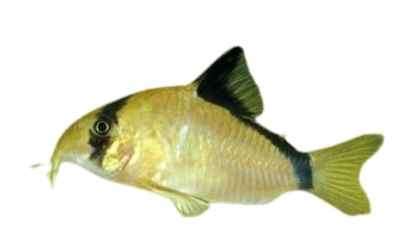Bandit corydoras is an exceptionally well known tropical freshwater aquarium fish among the aquarium fish keepers. It is a silurid catfish which belongs to the Callichthyidae family under class Actinopterygii. It (Corydoras metae) was first depicted by Ichthyologist Carl Henry Eigenmann in 1914. The genus name “Corydoras” comes from Greek ‘Kory’ means helmet and Greek ‘doras’ means skin while species name “metae” comes from Meta River, South America (Colombia).
Systematic Position
Common Names
It has a few basic names, for example, Bandit Cory, Bandit Catfish, Meta River Catfish, Masked Cory, Meta River corydoras, Rio Meta Cory, etc.
Distribution and Habitat
It is found in inland waters of South America and in the Meta River basin of Colombia. It wants to live in little waterways, streams and springs where aquatic plants are available. They generally prefer great water quality with a pH of 6.5-7.0, hardness of 5-10 dGH and temperature of 72-79 degree F.
Body Shape and Colors
The body is prolonged with profoundly forked caudal fin. The body is light whitish to pink in shading. Head bears dark band that runs vertically over the eye which gives the common name “Bandit Cory”. At the tip of the mouth two sets of barbell are available.

Bottom Half bit of the dorsal fin is dark in shading however all other fins are colorless. At the base of the caudal fin another dark band is available which appends with the lower half of the dorsal fin. One spine and 7 soft rays are present on dorsal fin while anal fin bears one spine and 6 soft rays.
Body Size and Lifespan
It can grow up to 5 cm long and can satisfy 5 years or increasingly if appropriate care is taken.
Quick Bandit Corydoras Facts
Feeding Behavior
It is an omnivorous fish which normally feeds on worms, crustacea, insects, plant matter even injured fish. In captivity fish should be supplemented with live food, for example Daphnia, Artemia and bloodworm.
To guarantee better development, sinking algae pellets with flake food or other sinking foods for example, catfish pellets should be provided. In this case, feed should be provided 2-3 times daily.
Housing and Care Facts
Bandit corydoras is a greatly quiet and schooling fish. It requires no less than 20 gallons aquarium or bigger with some open regions for swimming. The tank should have fine or sandy substrate to avoid injures their ventral sides of the body and barbells.
The water should be passed through peat to make crystal clear and 50 % of the tank water needs to change per month. The lighting should not be excessively magnificent. It can also live with low oxygen levels. The tank should have aquarium plants with broad leaves as a hiding spot.
Tank-mates
It is a community and peaceful fish which should be kept with 5 or more individuals. Reasonable tank-mates are Platies, danios, livebearers, rasboras, Guppies, Mollies, Swordtails, Gouramis, Rainbowfish, Tetras, Barbs, Discus, Angelfish, and Plecos.
Breeding Behavior
Bandit corydoras is an egg spawners and it is possible to breed in aquarium condition if you take appropriate care. In nature, it spawns during the rainy season. Parents should be conditioned with a variety of food like live and frozen brine shrimp before spawning.
The mature female lays up to 100 eggs per batch in dense vegetation without adult protection. It generally lays their eggs in Java Moss or on the tank sides. Eggs hatch within 5 days. The fry should be fed with newly hatched baby brine shrimp.
The fry grow rapidly and can take ground flake food after a week. To prevent loss of large number of fry, 50% water changes should be done daily with regular tap water.
Male and Female Differences
The male is littler than the female in size while the female is substantially rounder and more extensive than the male. The ventral fins of the develop male are more pointed than those of the female. During the breeding season, belly of the female carries eggs.
Read Also: Beautiful Aquarium Fish: Harlequin Rasbora
Concluding Remarks
The Bandit corydoras is an exceptionally well known fish both for learners and experienced pet fish guardians because of its ravishing shading and toughness. All things considered, if you keep this fish it makes a superb situation to your home aquarium. If you are still looking for something else you can read Bumblebee Catfish Care.
